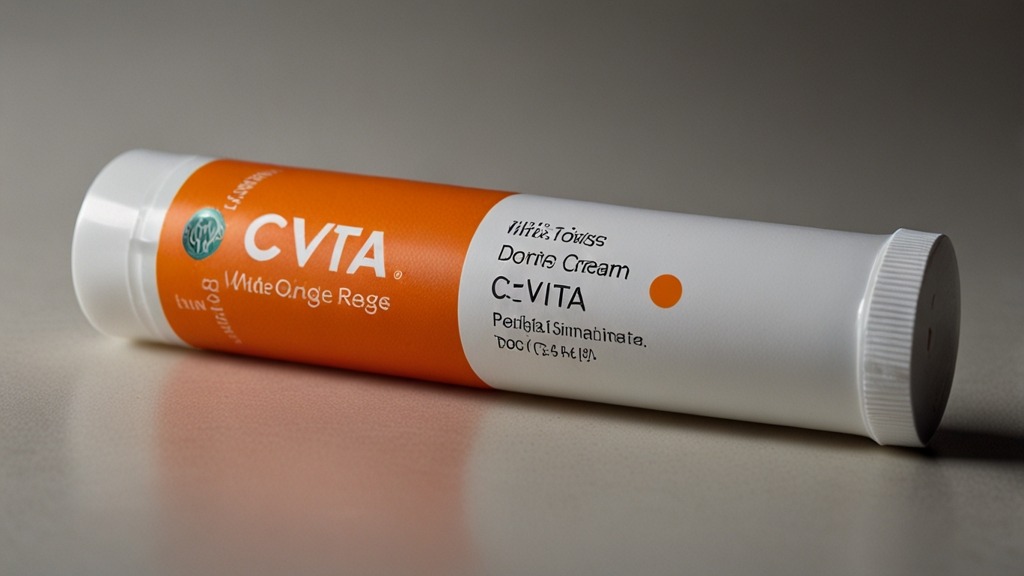Alzheimer’s disease remains one of the most perplexing and devastating neurodegenerative disorders, affecting millions of individuals worldwide. Amidst the growing demand for effective treatments, ADN-237 has emerged as a promising therapeutic candidate. Researchers are delving deep into its potential, with clinical trials and preclinical studies illuminating its capabilities.
This article explores ADN-237, its role in addressing cognitive decline, and the hope it brings to patients and caregivers alike.
What is ADN-237?
ADN-237 is a novel pharmaceutical compound under investigation for its potential to address the underlying mechanisms of Alzheimer’s disease. Unlike conventional therapies that primarily target symptoms, ADN-237 is designed to intervene at the cellular level, targeting the accumulation of amyloid-beta plaques—a hallmark of Alzheimer’s pathology. This innovative approach sets ADN-237 apart, offering a glimpse into the future of Alzheimer’s treatment.
The Science Behind ADN-237
ADN-237 functions by inhibiting the aggregation of amyloid-beta proteins in the brain. This aggregation leads to the formation of toxic plaques that interfere with neuron function, causing memory loss and cognitive decline. By preventing these proteins from clumping together, ADN-237 aims to preserve neuronal health, potentially slowing or halting disease progression.
Additionally, ADN-237 may exhibit neuroprotective properties, reducing inflammation and oxidative stress in the brain—two factors that exacerbate Alzheimer’s pathology. These dual mechanisms provide a comprehensive approach to combating the disease.
Benefits of ADN-237

ADN-237 has generated significant interest within the scientific and medical communities due to its potential to address Alzheimer’s disease at its roots. Unlike traditional treatments that primarily manage symptoms, ADN-237 offers a novel approach that may significantly alter the trajectory of the disease. Here, we explore the key benefits of ADN-237 and its implications for patients, caregivers, and the future of Alzheimer’s treatment.
1. Slows the Progression of Alzheimer’s Disease
One of the most compelling benefits of ADN-237 is its potential to slow the progression of Alzheimer’s disease. By targeting the accumulation of amyloid-beta plaques in the brain—a defining characteristic of Alzheimer’s—it may help preserve cognitive function and delay the onset of severe symptoms. This means individuals may enjoy a higher quality of life for a longer period, maintaining their independence and mental clarity.
2. Targets the Root Cause
Most Alzheimer’s drugs available today address symptoms such as memory loss, confusion, and mood changes but do not tackle the underlying mechanisms of the disease. ADN-237 stands out by focusing on amyloid-beta proteins, preventing their aggregation into toxic plaques. This proactive approach directly addresses one of the root causes of neurodegeneration, offering the potential for more effective disease management.
3. Enhances Neuroprotection
In addition to inhibiting amyloid-beta aggregation, ADN-237 is believed to provide neuroprotective effects. It may reduce oxidative stress and inflammation in the brain—two factors that exacerbate neuronal damage. This dual action not only helps preserve existing neurons but also creates a healthier environment for brain function, offering a comprehensive defense against the disease’s progression.
4. Improves Cognitive Function
Research indicates that ADN-237 could improve cognitive performance in patients with early to moderate stages of Alzheimer’s. By mitigating the formation of harmful plaques and reducing inflammation, it supports better communication between neurons. This improvement in synaptic function can lead to measurable gains in memory, attention, and problem-solving skills, allowing patients to engage more fully in daily activities.
5. Minimal Side Effects
Emerging clinical trial data suggest that ADN-237 is generally well-tolerated, with few reported side effects. This is a crucial advantage, as many existing Alzheimer’s treatments can cause adverse reactions such as nausea, dizziness, or fatigue. The mild side effect profile of ADN-237 enhances its potential as a preferred treatment option for long-term use.
6. Potential for Early Intervention
ADN-237 shows promise in early intervention strategies. Administering the treatment during the initial stages of Alzheimer’s could slow the disease’s progression before significant cognitive decline occurs. This early action could extend the window of opportunity for patients to live independent and fulfilling lives, potentially reshaping how Alzheimer’s is managed in the future.
7. Better Quality of Life for Patients and Caregivers
For patients, ADN-237 offers hope for extended cognitive health, enabling them to maintain their sense of identity and independence. For caregivers, the delayed progression of symptoms can reduce the emotional and physical burdens of caregiving. Together, these benefits could foster stronger relationships and a more positive outlook for both patients and their support networks.
8. Complementary to Personalized Medicine
The mechanism of ADN-237 aligns well with emerging trends in personalized medicine. It could be used alongside genetic and biomarker testing to identify patients most likely to benefit from the treatment. This targeted approach maximizes its effectiveness while minimizing the risk of unnecessary interventions.
9. Future Potential for Combination Therapy
ADN-237 may also play a pivotal role in combination therapies. When paired with other emerging treatments, such as drugs targeting tau proteins or enhancing neurogenesis, it could form part of a multi-faceted strategy to combat Alzheimer’s. This holistic approach could address the disease from multiple angles, significantly improving outcomes.
10. Hope for Other Neurodegenerative Diseases
While primarily researched for Alzheimer’s, the mechanisms of ADN-237—such as reducing amyloid-beta toxicity and protecting neurons—may have applications for other neurodegenerative diseases like Parkinson’s or Huntington’s. Its potential versatility could open new avenues for treatment in related conditions, broadening its impact in neuroscience.
Clinical Research on ADN-237
The clinical journey of ADN-237 has gained significant momentum, with multiple phases of research shedding light on its efficacy and safety profile. Preclinical studies on animal models have shown promising results, demonstrating reduced plaque accumulation and improved cognitive outcomes. These findings have paved the way for human trials, where researchers aim to confirm its effectiveness and evaluate long-term safety.
Early-phase clinical trials have reported encouraging outcomes, including measurable improvements in cognitive performance and minimal side effects. However, larger, multi-center trials are underway to solidify these results and assess broader implications for diverse patient populations.
ADN-237 in Comparison to Existing Treatments
Current Alzheimer’s treatments, such as cholinesterase inhibitors and NMDA receptor antagonists, primarily focus on symptom management. These drugs may provide temporary relief from memory loss or confusion but do little to alter the disease’s trajectory. ADN237, on the other hand, represents a paradigm shift by targeting the root cause—amyloid-beta aggregation. This innovative approach holds the potential to change the landscape of Alzheimer’s therapy.
Challenges in Developing ADN-237
While the promise of ADN237 is undeniable, its development is not without hurdles. These challenges include:
- Complexity of Alzheimer’s Disease: The multifaceted nature of the disease makes it difficult to develop a one-size-fits-all treatment.
- Regulatory Approvals: Meeting stringent FDA and global regulatory requirements demands robust evidence of safety and efficacy.
- Cost of Development: The high financial investment required for clinical trials poses challenges for sustained research.
- Variability in Patient Response: Genetic and environmental factors can influence individual outcomes, complicating treatment standardization.
ADN-237 and Emerging Therapeutic Trends
ADN-237 aligns with broader trends in Alzheimer’s research, including the focus on personalized medicine and biomarker-driven diagnostics. By tailoring treatments to an individual’s genetic profile and disease stage, scientists aim to enhance efficacy and reduce side effects. ADN237’s mechanism of action complements these efforts, making it a vital player in the next generation of Alzheimer’s therapies.
Conclusion
ADN-237 represents a beacon of hope in the fight against Alzheimer’s disease. Its innovative mechanism, coupled with promising early research, highlights its potential to redefine how we approach this devastating condition. While challenges remain, the strides being made in ADN237’s development underscore the resilience and determination of the scientific community. With continued research and collaboration, the day may come when Alzheimer’s becomes a manageable—or even curable—disease
FAQs
What makes ADN-237 unique?
ADN-237 stands out for its targeted approach to preventing amyloid-beta plaque aggregation, addressing the root cause of Alzheimer’s rather than just its symptoms.
Is ADN237 safe for long-term use?
Current studies suggest a favorable safety profile, but long-term data from ongoing clinical trials will provide a more comprehensive understanding.
How soon can patients expect ADN237 to be available?
ADN237 is still undergoing clinical trials. While early results are promising, regulatory approval could take several years.
Does ADN237 work for all stages of Alzheimer’s?
Preliminary research indicates that ADN237 may be most effective in early to moderate stages of the disease, where intervention can prevent further cognitive decline.
Are there any side effects associated with ADN237?
Reported side effects so far are minimal, with most patients tolerating the drug well. However, comprehensive studies are ongoing.
How does ADN237 compare to other Alzheimer’s drugs?
Unlike existing treatments that manage symptoms, ADN237 targets amyloid-beta aggregation, offering a potentially transformative approach.










